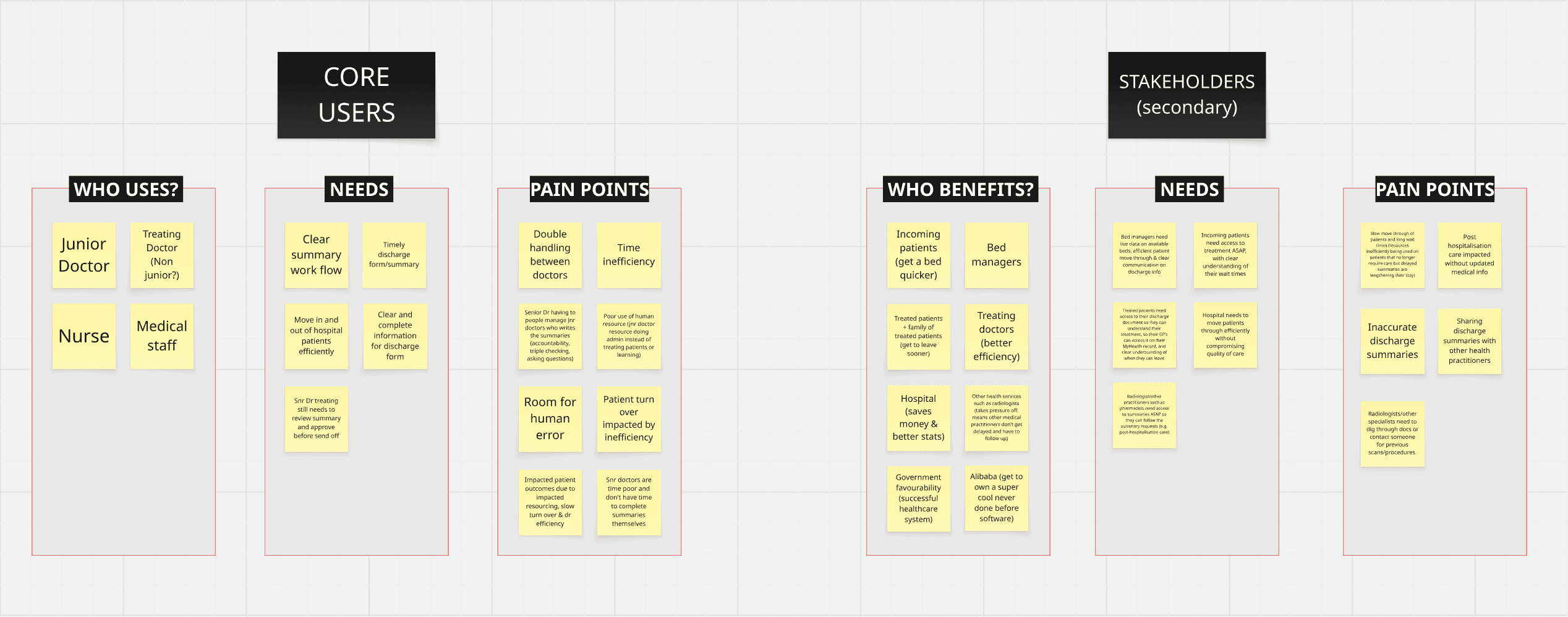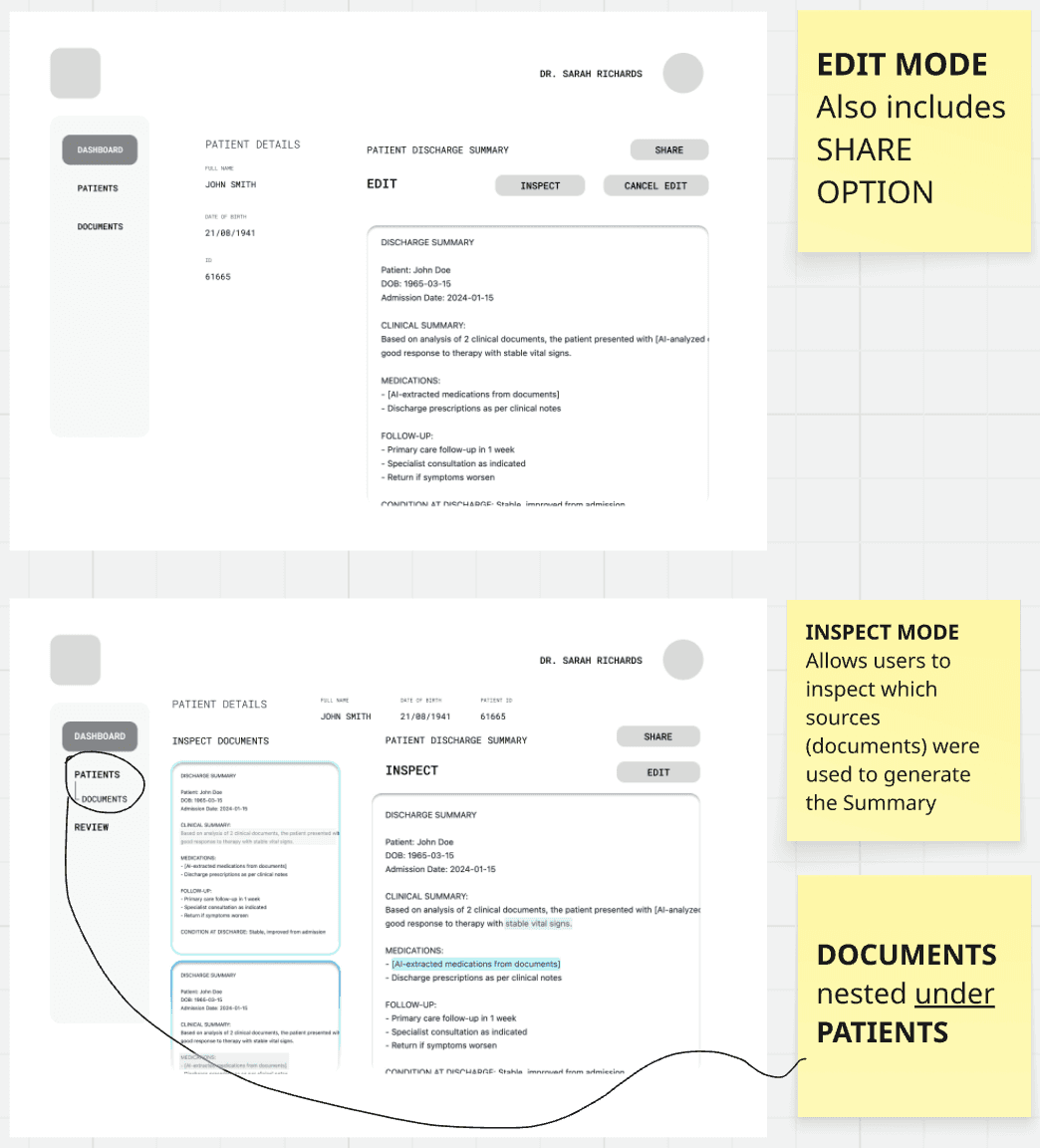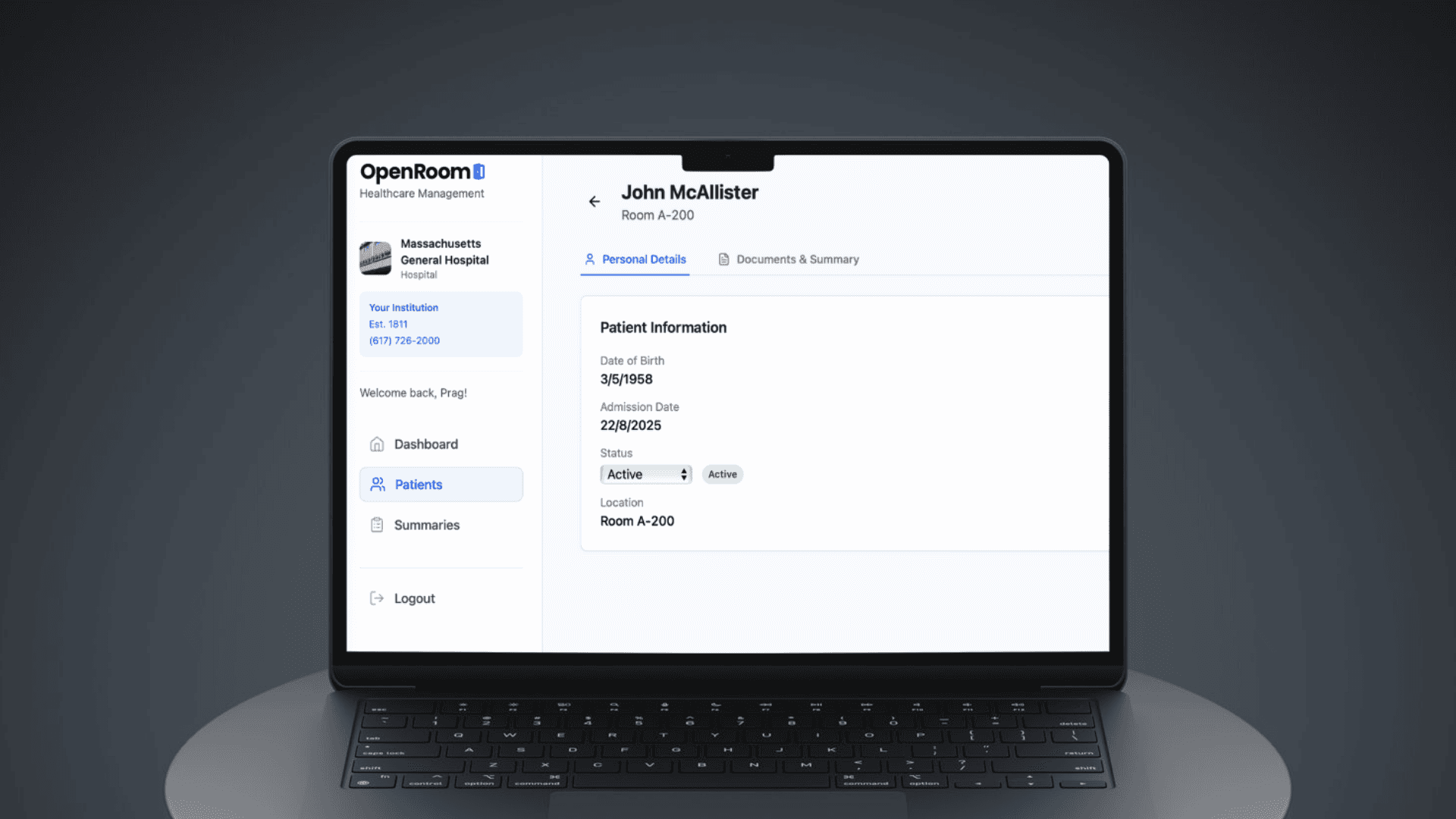Reducing delays in the hospital system
Hospitals lose time and money to the delayed discharge of patients, while patients suffer the long-term consequences of these delays with increased chances of remission. In a team of AI developers and designers, we reimagined the discharge report generation process using the automative power of AI.

Project Overview
Over a one-week sprint, our team of five was tasked to develop a main viable product of an AI tool that solved a problem and utilised Cloud server technologies. We developed a discharge report generation technology that uses the automative power of AI to cut delays in the patient discharge process in the inundated hospital environments.
The Problem
How might we diminish delays in the patient discharge process?
Hospital discharges take up to 2.2 hours per patient and on average discharge summaries consume 135 hours a week for the medical workforce.
Delays in completing hospital discharge summaries have also been linked to a greater risk of patients returning to hospital within 30 days — as each day’s delay in finalising a summary was associated with a 1.6% increased chance of readmission.
Role
UX Designer & Researcher
The Process
As the lead UX designer, I led the team through three key initiatives to align cross-disciplinary team members on a holistic and unified solution.
Contextualised problem space and identified user pain points
I carried out a literary review of various academic sources and synthesised information to present in a co-design session with a cross-functional team with no prior medical experience in a concise and focussed manner.
I led user interviews with a small sample of stakeholders of the problem space within a short 2-day user research sprint, which helped us identify key pain points in the patient discharge process.

Facilitated the ideation of collaborative and empathy-based solution
Led a collaborative ideation workshop with the team’s UI designer, where we prompted developers to contribute their interpretation of user pain points and requirements based on user research insights I synthesised.
Followed by ideation of solutions that were feasible within LLM capabilities and time-limit of one week.

Accelerated the design feedback cycle through AI-assisted prototyping
Based on the requirements we had gathered in our collaborative session, I paired with a developer to write up a proposal document of our solution and fed the contents into a rapid prototyping AI tool, Bolt.
Using this prototype, I initiated user testing and recruited the UI designer in translating user feedback into actionable insights through post-it notes stuck on screenshots of the prototype.
Try out the test prototype

I noticed that there was a pattern of skepticism from users during testing, on whether AI would be accurate and unbiased in transcribing important complex, personal information. This was supported by a recent KPMG report that revealed 66% rely on AI output without evaluating accuracy and 56% are making mistakes in their work due to AI.
In order to address this issue of trust and accuracy, as much as possible for users, I designed an 'Inspect' Mode where users could inspect the source document of statements generated in the Patient Discharge Report and accordingly, make edits in 'Edit' Mode.

The Outcome
We expect to measure the success of the product in the following ways:
Decrease in time spent writing discharge summaries → Under the current median of 14.5 minutes.
>90% clinician satisfaction with clarity and usability of summaries (via surveys or metrics of Edit function used).
Decrease in cost per patient (delayed discharge cost).
Decreased rates of patients readmitted within 30-day window post-discharge.
Increased efficiency in bed turnover:
Average time from discharge decision to bed availability reduced from 6 hours to <5 hours
